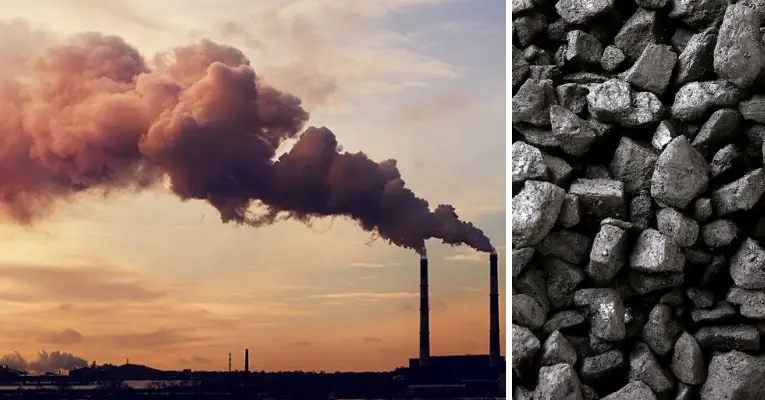Science & Tech
Scientists Pull Carbon Dioxide Out of the Air and Turned It Back Into Coal

Carbon dioxide emissions have been wreaking havoc on the planet in recent years, as evidenced by erratic weather patterns and climate shifts that are sweeping a growing number of regions toward unlivable conditions.
Yet a new study suggests that there may exist a way for us to literally pull CO2 from the atmosphere and transform it back into solid coal. The discovery, made by a group of researchers in Australia, may pave the way for our fight against rising greenhouse gas levels and finally tip the balance toward attaining negative carbon emissions in human society and industry.
The study, published in Nature Communications journal, claims that the researchers at RMIT University in Melbourne have found a new way to “safely and permanently” remove CO2 from the air and convert it into a coal-like substance of solid carbon flakes that would be easily and securely stored.
The method involves dissolving CO2 into beakers containing electrolyte liquids, before small amounts of a liquid metal catalyst are adde, then charging the mixture with an electrical current that acts as a catalyst, converting the carbon dioxide into solids. The flakes naturally detach from the liquid metal, allowing for the solid to be continuously produced.
In a statement, RMIT researcher Dr. Torben Daeneke noted that the discovery represented a “crucial first step to delivering solid storage of carbon.” The scientist explained:
“While we can’t literally turn back time, turning carbon dioxide back into coal and burying it back in the ground is a bit like rewinding the emissions clock. To date, CO2 has only been converted into a solid at extremely high temperatures, making it industrially unviable.”
Other techniques supported by transnational oil and gas corporations like Shell, focused on compressing carbon dioxide into a liquid that was then injected underground in porous reservoirs. Many argued that such storage methods, in addition to being costly and requiring heavy subsidies or carbon taxes, carried their own risk of leaks and environmental catastrophe.
While this isn’t the first time that CO2 has been transformed into a solid, this is the first technique that didn’t require extremely high temperatures that are largely only feasible in a laboratory setting.
The study’s lead author, Dr. Dorna Esrafilzadeh, also noted that the carbon produced could have other uses beyond a coal that would need to be stored away. She explained:
“A side benefit of the process is that the carbon can hold electrical charge, becoming a super capacitor, so it could potentially be used as a component in future vehicles. The process also produces synthetic fuel as a by-product, which could also have industrial applications.”
Typos, corrections and/or news tips? Email us at Contact@TheMindUnleashed.com
